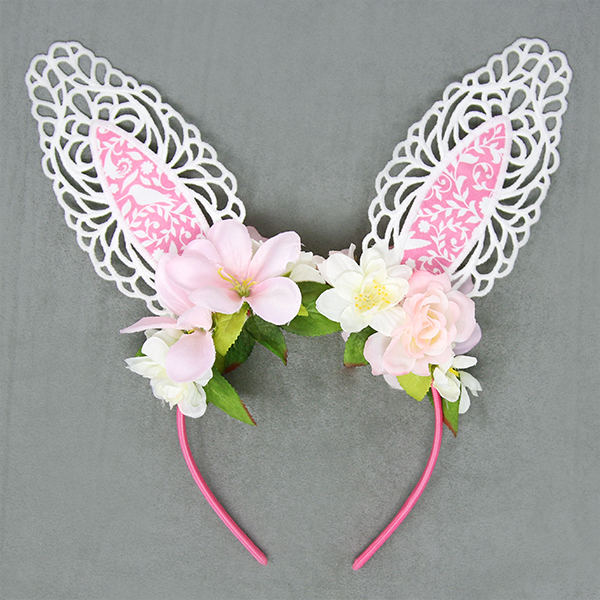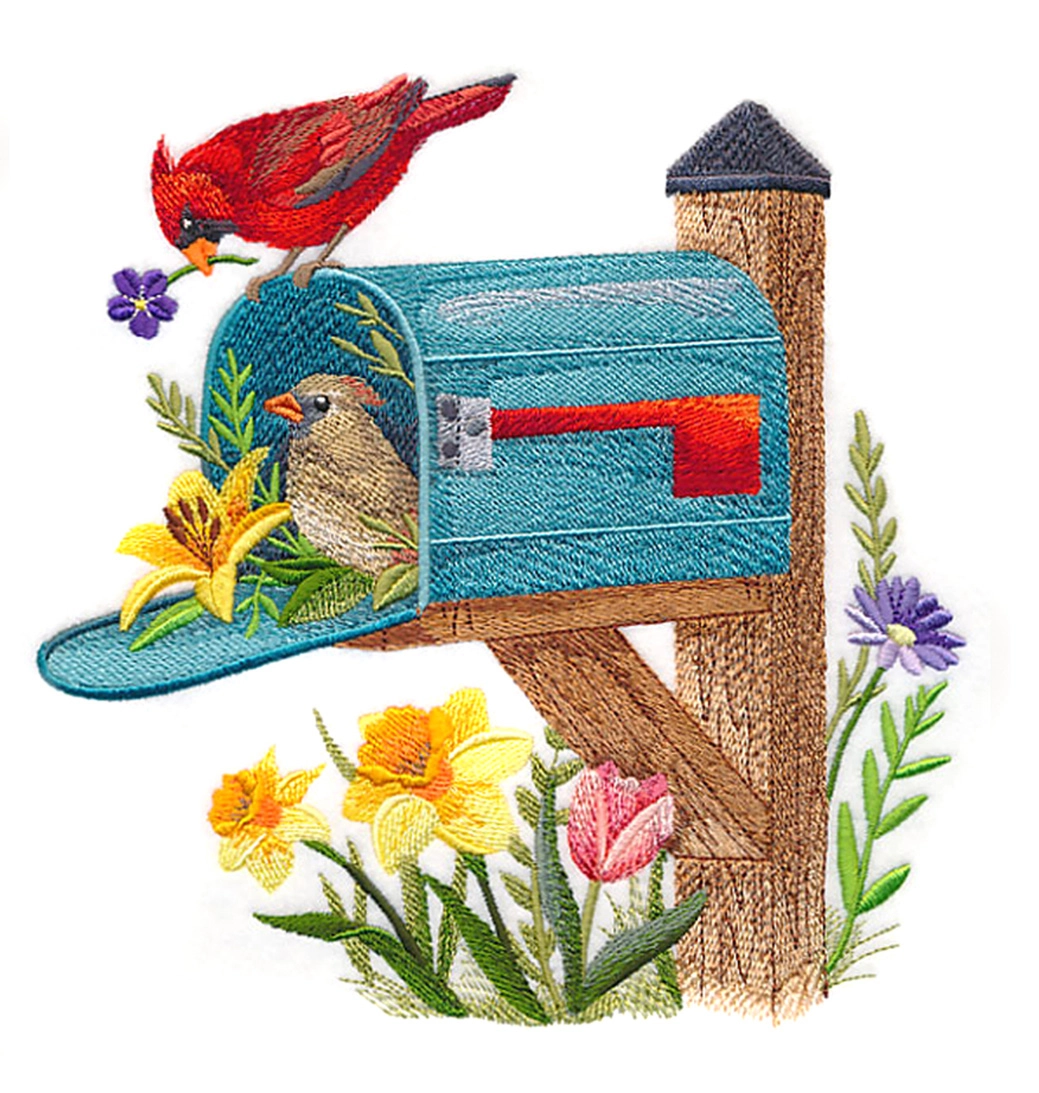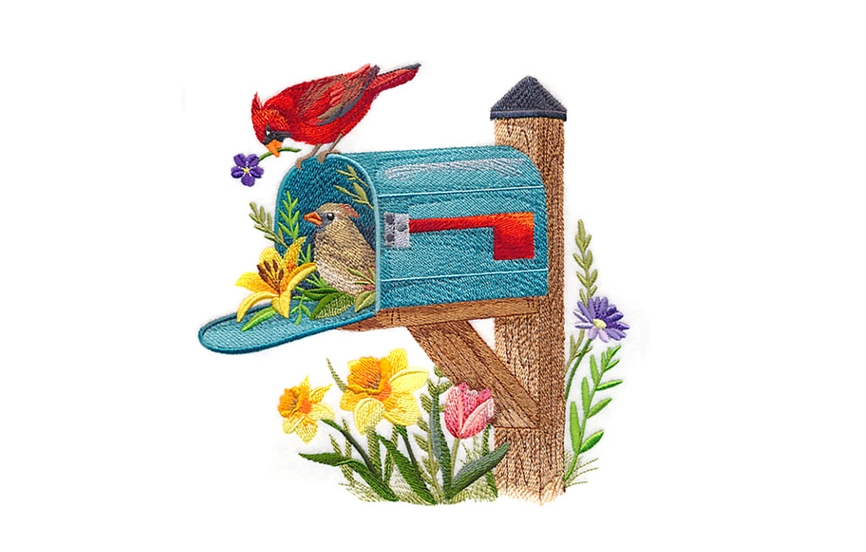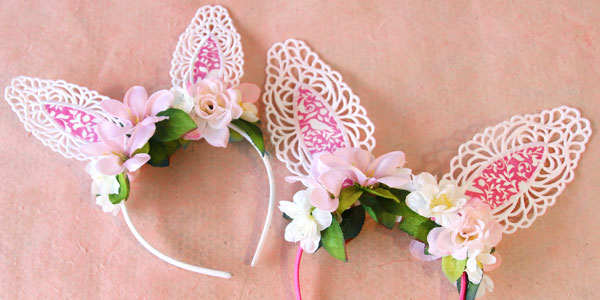
Craft playful Easter accessories for kids and adults alike with this charming project! Just stitch two beautiful fabric-accented lace bunny ears, then attach to a headband and decorate with artificial flowers. We'll show you step-by-step how to make your own!
Supplies
Project Needs & Notes:
- Small pieces of quilter's cotton
- Medium weight cutaway stabilizer
- Heavy water-soluble stabilizer (such as Vilene or Sulky Ultra Solvy)
- Temporary spray adhesive (such as Gunold KK 100)
- Embroidery thread
- Scissors
- Hot glue gun
- 1/4" headband
- Artificial flowers and leaves
Designs featured in this tutorial include:
- X14561, Adorable Bunny Ears (Lace)
Special Notes:
To make a full headband, embroider 2 copies of the file, so that there are two identical ears.
For best results, use a pink fabric for the front fabric piece to show the inside of the ear, and use fabric matching the thread color for the back fabric piece to show the back of the ear.
Designs Used
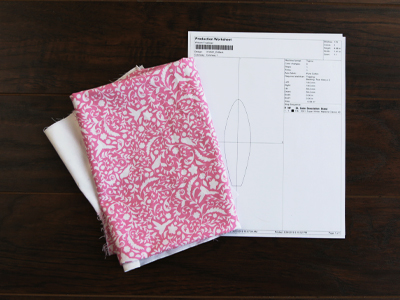
When you download the In-the-hoop lace bunny ears design, you will find multiple files. Some are the embroidery files, and the others are dieline files marked with the letters "DL". Dieline files are used to cut the fabric to the correct shape and size.
Open and print each dieline file using an embroidery software. If you do not have embroidery software, Wilcom TrueSizer is a free program to use.
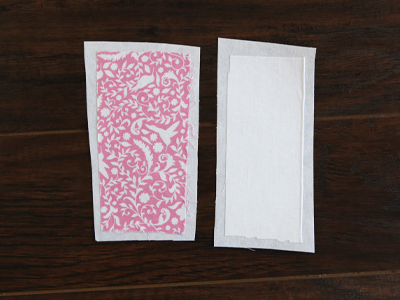
First, spray one side of a piece of cutaway stabilizer with temporary adhesive. Smooth the stabilizer onto the wrong side of the fabric for both the front and the back fabric pieces.
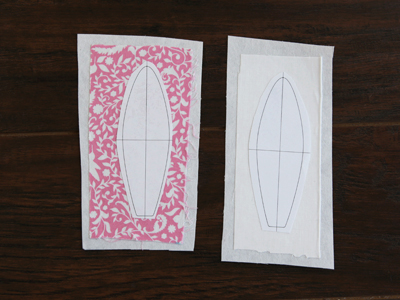
Next, spray the back side of the printed front piece and the back piece dielines with temporary adhesive. Smooth them onto the right side of the appropriate fabrics.
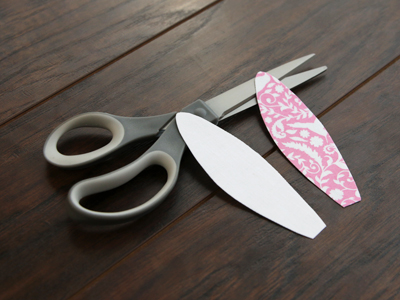
Cut the front dieline shapes out of the adhered fabric and cutaway stabilizer. Then remove the paper dielines.
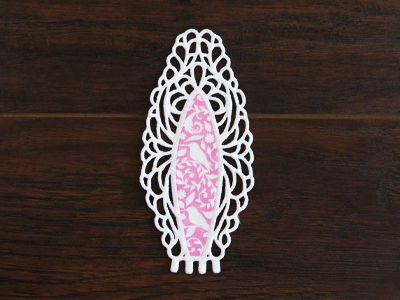
Freestanding designs have been specially digitized for water-soluble stabilizer. After the stabilizer is removed, beautiful lace and fabric remains.
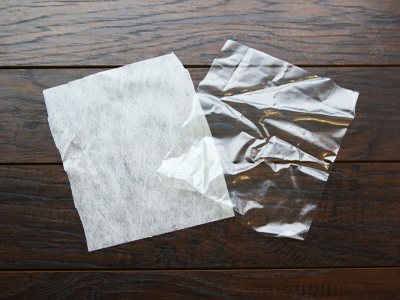
There are a couple of different kinds of heavy water-soluble stabilizer. One is clear and plastic. That brand is Sulky Ultra Solvy. The other is soft and fibrous, called Vilene. Both will work very well. Vilene is used in this demonstration.
Use a size 11 or 75/11 sharp sewing needle. A sharp sewing needle has a smaller, finer point than an embroidery needle. That means it will make smaller holes in the stabilizer.
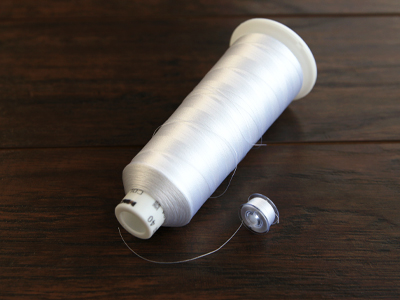
As the freestanding lace organza will be seen from both sides, wind a bobbin with the same thread that is being used in the top needle.
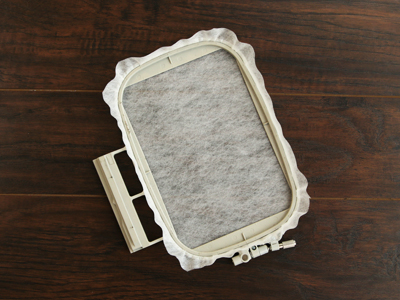
Hoop the stabilizer firmly. Make sure it is nice and tight with no wrinkles.
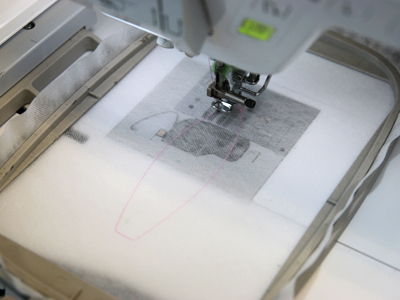
Load the embroidery file onto the machine (not the dieline file), and embroider the design. The first thing to embroider will be a dieline, or outline stitch. This marks the area on the stabilizer where the fabric pieces will be placed.
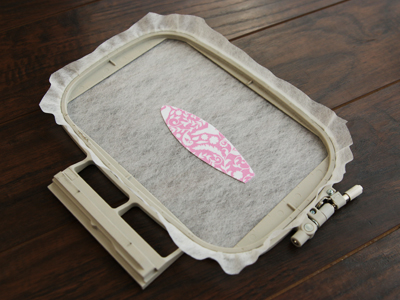
Remove the hoop from the machine, but do not unhoop the stabilizer. Spray the back of the front fabric piece with temporary adhesive, and smooth it in place right inside the sewn dieline.
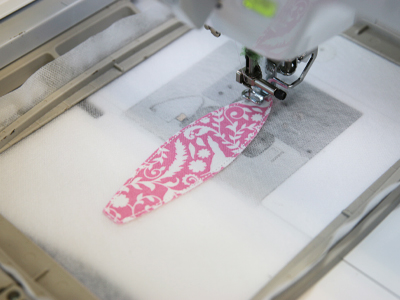
Reattach the hoop to the machine and continue with the design. A tackdown stitch will sew next. This binds the front fabric piece to the hooped stabilizer for the remainder of the design.
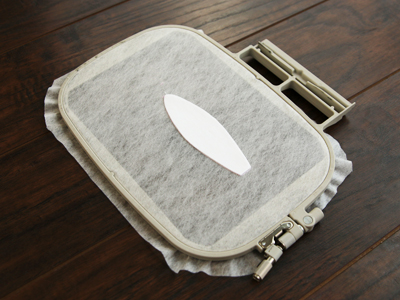
Look at the color change sheet, and stop the machine before sewing the "back piece tackdown". Remove the hoop from the machine, but do not unhoop the stabilizer.
Spray the back side of the back fabric piece with temporary adhesive, and place it on the back of the embroidery.
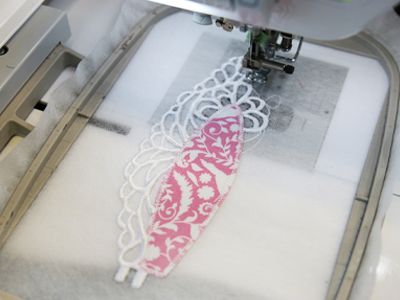
Place the hoop back on the machine, and embroider the "back piece tackdown". Next, all of the embroidered details will sew such as the satin edges and lace borders.
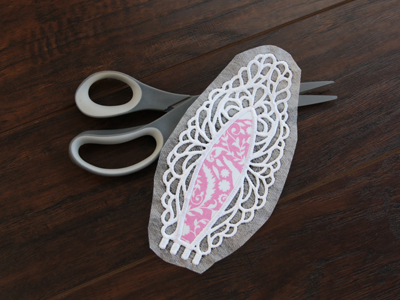
After embroidering, cut the excess stabilizer away.
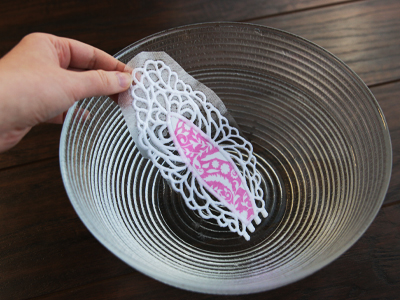
The stabilizer's packaging should give instructions for removing the excess. For Vilene, soak the organza pieces for a few moments.
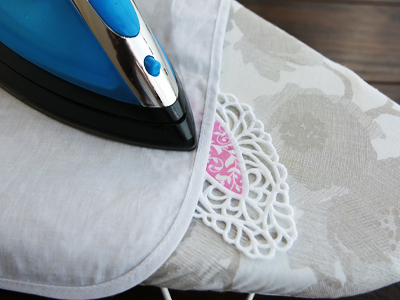
Let the piece air dry, then press using a pressing cloth.
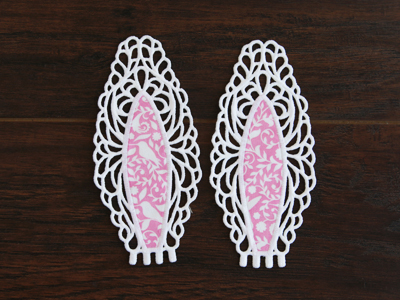
Repeat the previous steps to prepare and embroider a second ear for the headband.
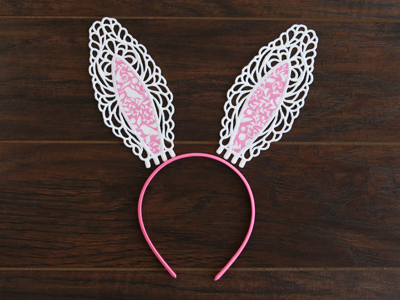
Lay the ears and headband out on the table before gluing to help with positioning the ears on the headband. If desired, the center of the ears can be marked on the headband to help with positioning.

The ears each have four tabs along the bottom edge. These are what will be glued to the headband. They are designed to help with stability as well.
To make the ears stable, place the top of the center two tabs on the front edge of the headband so they can be folded underneath. Then, fold the outer two tabs back so they lay backwards on the top side of the headband.
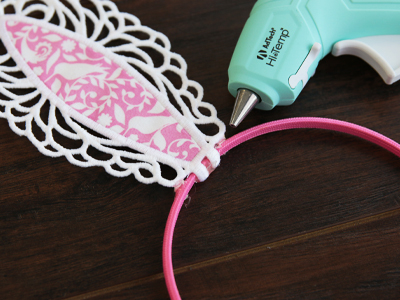
Next, glue the first ear in place using a hot glue gun. For best results, glue the center tabs first and then the outer tabs one at a time. Make sure to hold each tab in place until the glue is completely dry.
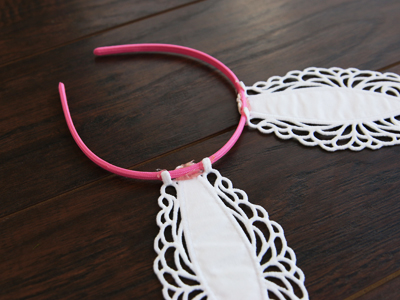
Repeat to add the second ear onto the headband. Again, remember to glue the inner tabs onto the bottom side of the headband, and have the outer tabs folded back and glued onto the top side of the headband.
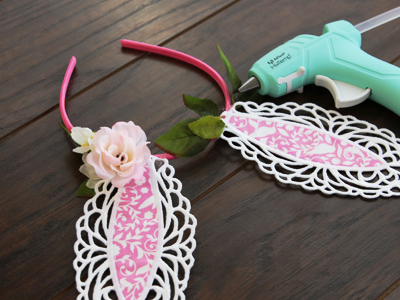
It is now time to begin decorating the headband. Start by laying out the flowers and leaves as desired. Then glue the leaves down first using a hot glue gun. Make sure to hold each leaf in place until the glue completely dries.
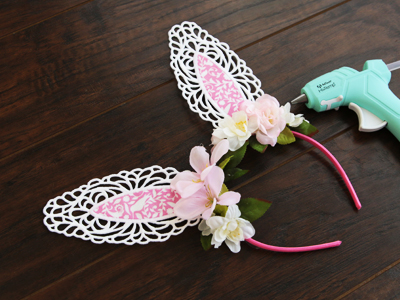
Using a hot glue gun, adhere the flowers on top of the leaves. Continue to add flowers and leaves as desired to the front side of the headband. Make sure to always hold them in place until the glue completely dries.
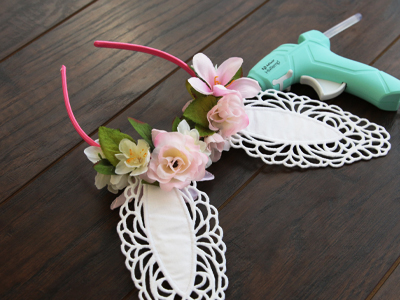
Next, turn it around and add flowers and leaves to the back side until the desired effect is reached. For best results use the flowers and leaves to completely hide where the ears attach onto the headband, and make them appear as full and lush as possible.
